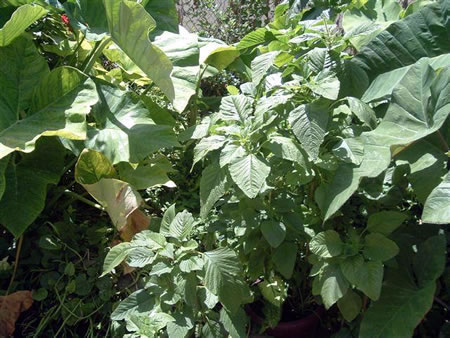Leafy vegetable, called Palak or Bhaji. It grows as a smal bush plant.

A variety that grows as a creeper, is called "Valchi Bhaji" and the stem as well as leaves are used for cooking.
Spinach has a high nutritional value and is extremely rich in antioxidants, especially when fresh, steamed, or quickly boiled. It is a rich source of vitamin A (and especially high in lutein), vitamin C, vitamin E, vitamin K, magnesium, manganese, folate, iron, vitamin B2, calcium, potassium, vitamin B6, folic acid, copper, protein, phosphorus, zinc, niacin, selenium and omega-3 fatty acids. Recently, opioid peptides called rubiscolins have also been found in spinach. It is a source of folic acid (Vitamin B9), and this vitamin was first purified from spinach. To benefit from the folate in spinach, it is better to steam it than to boil it. Boiling spinach for four minutes can halve the level of folate.[citation needed].
[edit] Iron
Spinach is considered to be a rich source of iron. For example, the United States Department of Agriculture states that a 180 g serving of boiled spinach contains 6.43 mg of iron, whereas one 170 g ground hamburger patty contains at most 4.42 mg
The leaves of the vegetable are used for cooking.
Types of spinach
A distinction can be made between older varieties of spinach and more modern varieties. Older varieties tend to bolt too early in warm conditions. Newer varieties tend to grow more rapidly but have less of an inclination to run up to seed. The older varieties have narrower leaves and tend to have a stronger and more bitter taste. Most newer varieties have broader leaves and round seeds.
There are three basic types of spinach: Read more
| < Prev | Next > |
|---|
